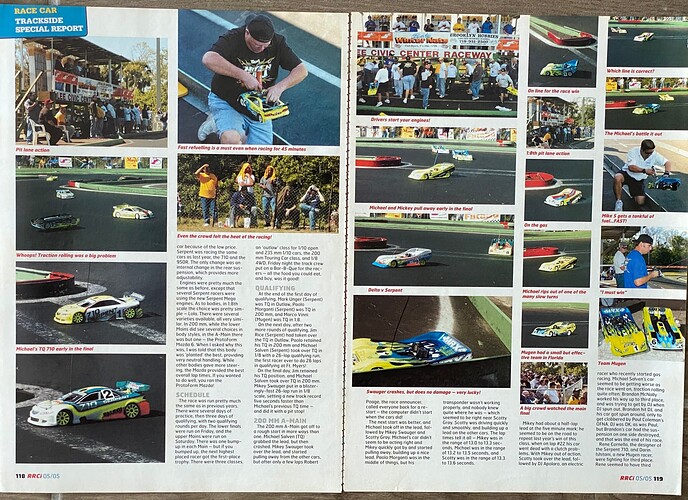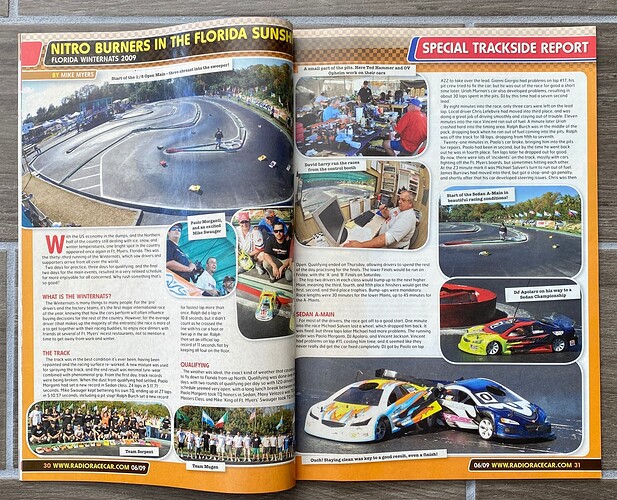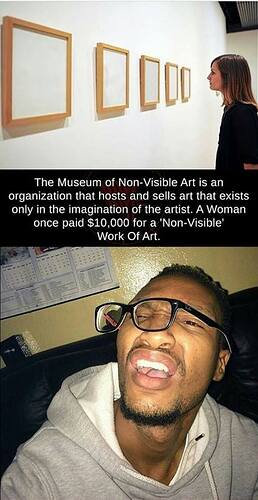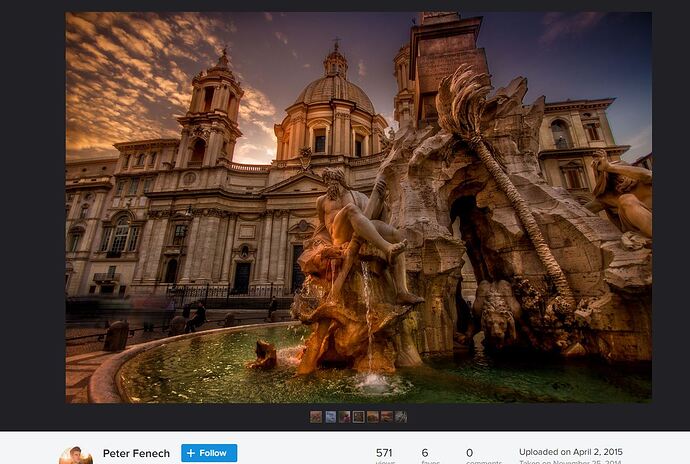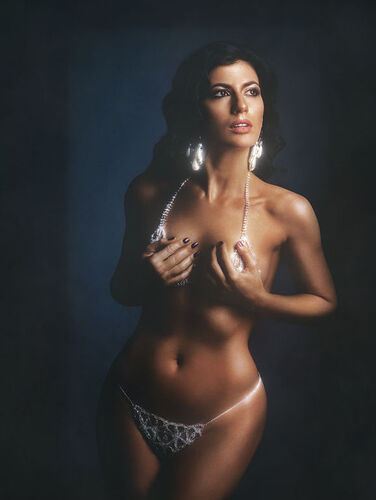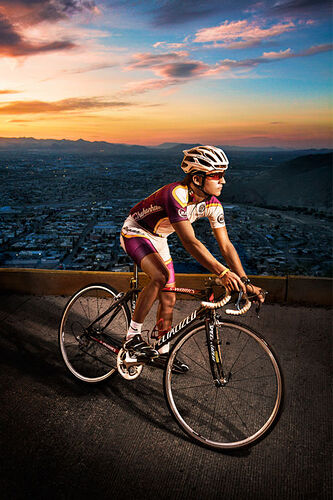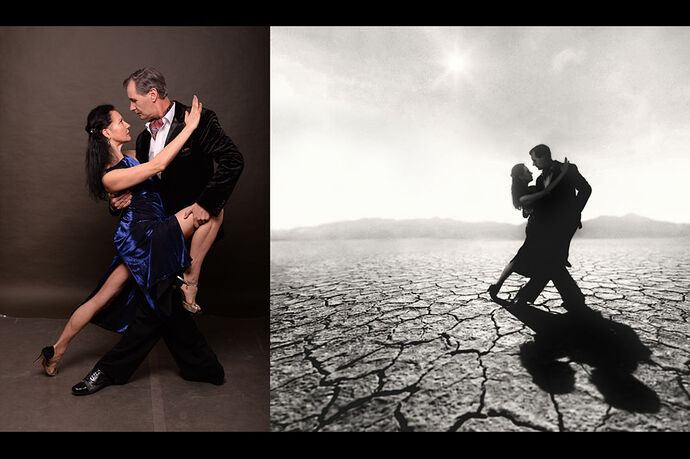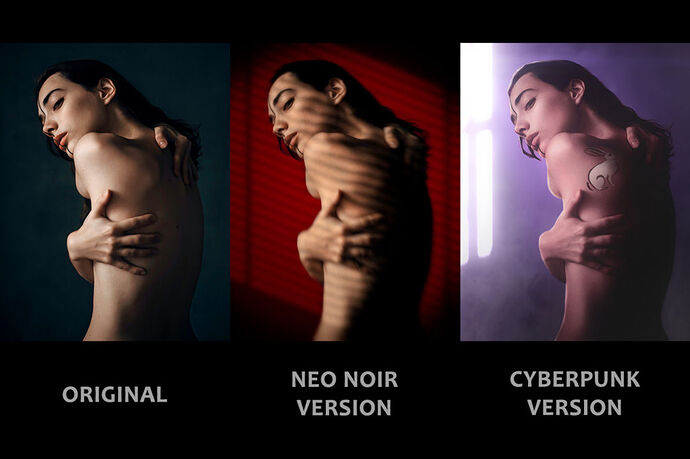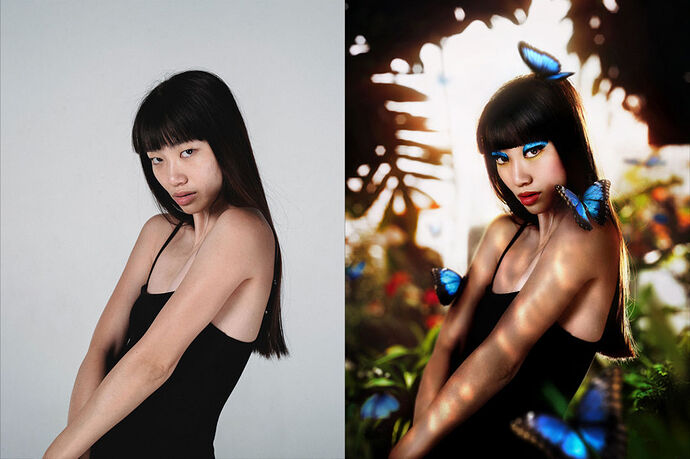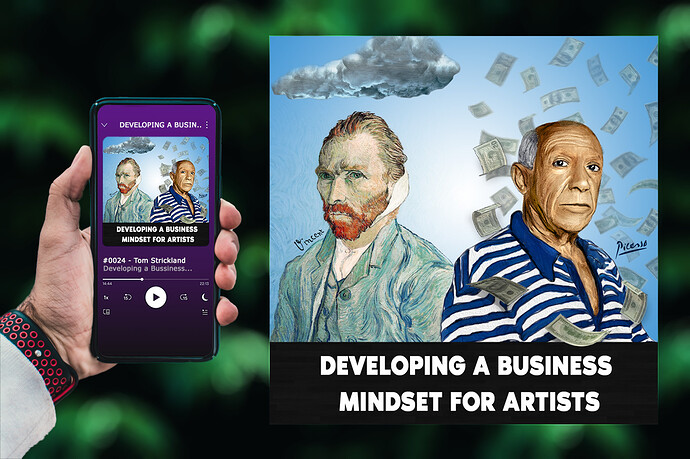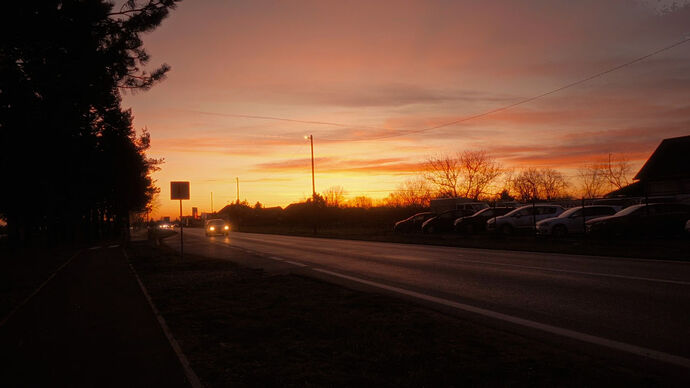Question - is THIS art? The real statue may be very famous, but my copy of a copy is no more than a “snapshot”, or more technically, a “screen capture”. Perhaps it is simply “photo journalism”?
So what you are basically saying is you did not have the proper tools to do the job including the right lens. That is no different today. You need to use the right tool for the job at hand. That is why I told you in an earlier post that you did not have an appropriate lens for birds in flight. It seems that your budget wasn’t up to the challenge as opposed to the availability of appropriate gear from that period.
Mark
I think I understand what you mean, but you might as well be telling me something about how a piece of electronic equipment works, along with those “flow charts” that look as useful to me as Egyptian"hieroglyphs".
Joanna, this photo of a magazine page shows what the R/C car magazines expected from me, with all photos clear and sharp, no motion blur, no focus errors, just perfectly clear images.
It’s obviously photojournalism, not “art”.
Could I do it with a D40 or D70? Sure, But with the D2x, and later the D3, almost every image I captured was this good, and I just had to narrow things down to around 25 images, so the magazine editor could arrange the article. This is two pages of a 6-page article, of a race held in Florida in2005. I’m pretty sure I used my D3:
So which is it?
I must live on another planet, sorry. Where’s the drama? Where’s the impression of speed? Why do they all look the same? We have taglines about ripping speed, crashes, on the gas and battling it out above clear, sharp, no motion blur, in focus images that look the same and bear no relation to what the words are trying to convey.
If that’s what’s expected of Photo journalists then it isn’t the job for me, or anyone else with a creative, story telling bone in their body.
I’m not having a go at you @mikemyers , you were professionally commissioned to provide images like that and you delivered what was asked for - I just don’t understand why
Easy, both!
If you created a sculpture, and I photographed it, YOU get the credit.
Since nobody created a sunrise or sunset, and I photographed it, I get the credit.
It is a magazine about and for people who race the radio control cars. The magazines knew what their readers wanted to see. Remember, “the customer is always right”. If I don’t give them what they want, they will find someone else who will. I tried to send them “crash” photos, like the one at the bottom right, here, but they mostly got ignored.
I’m not saying it’s what is expected of PhotoJournalists, just the magazine editors that printed my stories. Usually 25 good, clear, sharp photos of the cars in action, of the track layout, of the winning cars and the winning drivers.
Sometimes, the people who sold the brands of radio control car would then buy the rights to use the photos for advertising.
I had a real job, this was sort of a hobby, as I got to travel all around the world, all expenses paid, got to watch the events, meet the people involved, and then get paid for it too! It also allowed me to buy the latest Nikon year after year, until I could do everything I wanted. My thoughts at the time were that the D3 was as good as it gets… but the negatives were it was big, and heavy.
I went to B&H Photo, looking for an update for my D3, preferably not so big and heavy. D4 was out of the question. D800 was also out, too big and heavy. D750 was perfect. The Df was another choice, but the D750 had a flash, which the Df didn’t.
I also did off-road racing, 1/5 scale and 1/4 scale racing, and drag racing (which was too boring).
It depends on the intent and to extent on the skill. If the desire was to record the statue than it is a record. If the desire was to genuinely interpret the scene with a statue in it and perhaps something else, than that would be something else. Possibly art, but it depends on the intent and skill of the photographer.
"Great art is the outward expression of an inner life of the artist, and this innerlife will result in his personal vision of the world.”— Edward Hopper, prominent American realist painter (1882 – 1967)
Art’ is the same word as ‘artifice,’ that is to say, something that gives the impression of real by skillful creation of artifice. Artifice, means cleverness or ingenuity in making or doing something; art or skill.
“It’s a clever argument, Bob dear, but what are we supposed to be looking at?”
(p. 7)" ― The Shock of the New (1981), Companion book to Hughes’ TV documentary series of the same name.
As I’ve written before: Has it led you to the conclusion that photography is an art ? Or it is simply a means of recording? “I’m glad you asked that. I’ve been wanting to say this for years. Is cooking an art? Is talking an art? Is even painting an art? It is artfulness that makes art, not the medium itself. Of course photography is an art - when it is in the hands of artists.” ― Aaron Scharf
In my view art is about genuine intention and expression of an artist that has something meaningful to express with great skill. Skill is important I think because it sets standards of quality of the craftsmanship. But if there is no genuine expression of something meaningful and unique to the artist than truly there is no difference between craftsmanship by commission or design by commission. In other words, every artists can be a craftsman, but not every craftsman is artist. It depends on the intent.
No doubt there could be great skill involved in creating a commercial to sell a product or service. But it may be done by someone who has completely different worldview than the client who commissioned the work and if the client is the main director of the project than we have potentially great craftsmanship, but not art.
The statue in the photo you commented on, no doubt was a commission, but other than rough set of guidelines the work itself is the expression of the artists skill and vision.
The Fontana dei Quattro Fiumi, also known as the Fountain of the Four Rivers, is an architectural monument located in the Piazza Navona in Rome, Italy. It was designed in 1651 by Gian Lorenzo Bernini for Pope Innocent X, whose family palace, the Palazzo Pamphili, faced onto the piazza. The fountain represents the four major rivers that cartographers believed existed during the Renaissance and Baroque years, representing the influence of the Holy See and the Pope in four continents, through depictions of river gods: the Nile for Africa, the Ganges for Asia, the Danube for Europe, and the Ro de la Plata for the Americas. The fountain was an important source of potable water for the locals before the days of indoor plumbing, but it was also a grandiose monument to the power and glory of the pope and his family.2 Previously, the site was known as the Circus Domitian, which was opened in 86 A.D.
The Fontana dei Quattro Fiumi is an architectural monument located in Rome in the Piazza Navona. The name translates into English as the “Fountain of Four Rivers.”
Structure
The fountain consists of a water basin in which rocks are supporting the sculpted figures of four ancient river gods. Rising from the center of the basin is a tall Egyptian style obelisk. Mounted on top of the obelisk is a sculpted representation of the family crest of the Pamphilis, namely a dove holding a twig from an olive tree.
The Four Rivers
The four rivers referred to in the name are the Nile, the Ganges, the Danube and the Plate. The latter is the river that forms part of the border between Argentina and Uruguay. The sculptures of the gods include features and emblems that are representative of the four rivers and their locations.
The fountain was designed and completed in 1651 by one of the leading sculptors of the time, Gian Lorenzo Bernini.
How Bernini was Selected
The fountain was commissioned by the then Pope, Innocent X, who was a member of the Pamphili family. Piazza Navona was selected as the location for the fountain because Innocent’s family home overlooked the square. When the project was launched, the Pope initiated a competition, inviting interested artists to submit models of their ideas. Many of the Pope’s advisors were hostile to Bernini, as a result of which Bernini was initially excluded from the competition.
However, Bernini was persuaded by Prince Niccolo Ludovisi, who was married to the Pope’s niece to design a fountain and build a model. The model was placed in a room where the Pope was certain to see it, and when he did so, he immediately selected it.
The architectural style of the fountain was a complete departure from the other fountains in the city at the time, and the fountain received great praise from many sources.
Bernini’s design was selected in competition. The circumstances of his victory are described as follows in Filippo Baldinucci’s The life of Cavaliere Bernini (1682):
So strong was the sinister influence of the rivals of Bernini on the mind of Innocent that when he planned to set up in Piazza Navona the great obelisk brought to Rome by the Emperor Caracalla, which had been buried for a long time at Capo di Bove for the adornment of a magnificent fountain, the Pope had designs made by the leading architects of Rome without an order for one to Bernini. Prince Niccolò Ludovisi, whose wife was niece to the pope, persuaded Bernini to prepare a model, and arrange for it to be secretly installed in a room in the Palazzo Pamphili that the Pope had to pass. When the meal was finished, seeing such a noble creation, he stopped almost in ecstasy. Being prince of the keenest judgment and the loftiest ideas, after admiring it, said: “This is a trick … It will be necessary to employ Bernini in spite of those who do not wish it, for he who desires not to use Bernini’s designs, must take care not to see them.”
Public fountains in Rome served multiple purposes: first, they were highly needed sources of water for neighbors in the centuries prior to home plumbing. Second, they were monuments to the papal patrons. Earlier Bernini fountains had been the Fountain of the Triton in Piazza Barberini, the Fountain of the Moor in the southern end of Piazza Navona erected during the Barberini papacy, and the Neptune and Triton for Villa Peretti Montalto, whose statuary now resides at Victoria and Albert Museum in London.
But off course here is photographer, Peter Fenech with his vision on how to photograph the same Fontana dei Quattro Fiumi . He obviously had his own take on the scene. Skillfully expressed.
There are many ways to interpret the scene. And many different intents. And many different skillsets. Not all of it I would consider art , but some I would, because of the reasons I mentioned.
P.S.
I am just curious. Beyond being a proud owner of a camera. What is it that you think you do, exactly?
Who are you asking? All of us? Me?
My answer - the camera I use most often is nothing I am “proud” of; it is a tool.
I was asking you. You talk about camera a lot, which now you refer to as a mere tool, but you also seem to reject any other way to describe what you do with the tool. I was curious , how you see yourself.
Why do you change my meaning to a “mere” tool? My cameras have always been “tools” to create images. Yes, I talk about them a lot, along with other things, and yes, I have several film cameras still, because I enjoyed using them. Same for my computer - it’s also a “tool”. My car - not a tool, as I enjoy it a lot, but it’s also a “tool” as it gets me to where I want to go, and back.
My recently recovered Nikon D3 is also a tool, which I used for many years for taking photos of r/c cars, India, family, other trips, anything and everything. I used it at work to take photos of machinery, and I used to just for fun, probably most of the time. It is (or was) my connection with photography.
Is it a “work of art”? I doubt it.
Is it something I usually have with me? I guess so.
I just plain enjoy taking photos, always have, especially way back when with my darkroom.
I may be a “proud owner” of a 2012 Mazda Special Edition. I guess that fits.
Am I proud owner of my computer? Nope.
The camera lets me express myself.
I got my D3 back, although it is likely going to be donated to Aravind.
I spent the past few days re-learning it, and remembering why I liked it so much.
Today I took it outside to capture one image which I would work on with PhotoLab.
I might as well post it here, but it’s certainly not “art”.
I used the settings that might be closest to my D750.
Compared to the artwork posted up above, it is nothing.
D3M_0031 | 2023-06-20.nef (12.7 MB)
D3M_0031 | 2023-06-20.nef.dop (16.3 KB)
I expect my D780 would capture a similar image, in more detail. I do have plans for it, before I donate it.
If you’re asking what I do, my main hobby is Bullseye Shooting, reloading my own ammunition and trying to hit something the size of a silver dollar at 50 yards distance. I’m certainly more “proud” of my bullseye guns than my cameras. Anyone who wants a D3 can go to KEH and buy one for well under a thousand dollars. I’m also very much involved in computers, but I’m certainly not “proud” of them.
Care to tell us in this forum more about yourself, and post some of your recent photos?
P.S. - while I’m not proud of my cameras, I am very proud of the photos I captured in the past.
Fair enough.
Well, much like yourself I’m not really a photographer per se, I only work with images. Background in post production and education. I work with sand paintings but that is a long story, and probably won’t post it here.
As for post production, its retouching, compositing, that kind of thing.
E.g.
Along with compositing and retouching, sometimes I do some design work.
I also sometimes work as a colorist for video color gradating. Here are some personal experiments, screenshots, because I didn’t upload a video.
You mentioned sunsets, here are some screenshots from a handheld video I did the other day, just testing some LUTs I was working on. Sunsets are always fun to play with.
As I’ve mentioned I also like teaching others about art and also case studies or analysis of creative works.
Here is one I did just when pandemic started, that I’m quite proud off.
Case Study of a painting: “Liberty Leading the People”,1830.
French: La Liberté guidant le peuple is a painting by Eugène Delacroix commemorating the July Revolution of 1830, which toppled King Charles X of France. A woman of the people with a Phrygian cap personifying the concept of Liberty leads a varied group of people forward over a barricade and the bodies of the fallen, holding the flag of the French Revolution – the tricolour, which again became France’s national flag after these events – in one hand and brandishing a bayonetted musket with the other. The figure of Liberty is also viewed as a symbol of France and the French Republic known as Marianne.
How come you did ask here how to transfer images from the laptop to your pc???
George
Same as " i am very involved in tarmac."
i am using it, 1000km a week i drive over it.![]()
Don’t care about the stuff’s compound aslong as it keeps me above ground.![]()
(i am joking)
@MSmithy great images!
My plan was to copy the file(s) from laptop to desktop.
Then Joanna suggested I just copy the whole folder, using the tools on my desktop to copy from the laptop.
I was concerned about how PhotoLab might cause issues from doing this.
Everything went smoothly, until PhotoLab on the desktop complained about the “optics module”.
Both laptop and desktop are fully up to date.
Both PhotoLab systems have the optics corrections for my D3.
But - I used my brother’s Nikon 80-200 lens on the D3, (the lens is now 150 miles away), and PhotoLab on my desktop showed an error message that I posted earlier - it apparently wants me to delete one of the two optics modules attached to this image on my desktop.
I ignored the error messages, not knowing what to do, and edited the image on my desktop anyway.
I originally hesitated to copy the images because I had been concerned about the images (which worked fine)on my laptop might not work so well on my desktop.
This leads to a question I haven’t asked yet - how can I open these images on the desktop, and remove the offending optics module - or remove everything, and allow PhotoLab to create a new optics module on the desktop? I haven’t yet found an explanation that I can understand.
I think Joanna will know exactly what I need to do, and I will know better than to do this again in the future!
I started to read the screenful after screenful posted up above, and yes, I don’t get it. Neither do you.
There is using photography to create art.
There also is using photography for photojournalism.
For anyone reading this, here’s a challenge. Using a camera like a Nikon D40, or D70, or even a D90, try to capture a photo of a running horse that shows all four feet (hooves) in the air at the same time.
This is how it was done in the 1870’s. If I tried it today, I would get a Nikon Z9. But regular cameras like we all use? Not a high enough frame rate.
Ordinary cameras can possibly be used for special photography applications, but there is a reason why all those professional photographers up in the shooting booth are using professional cameras.
Me? I watched what the better photographers were using, and eventually bought cameras equally as capable. The D3 was fantastic, and did what I wanted/needed.
I won’t speak for you, but I do get it. Perhaps you don’t get me. ![]()
One last thought - it seems to me that most of you are talking about creating art/
That’s not me, although I try. For as long as I can remember, cameras (to me) were for photojournalism, VERY different from art, with its own rules.
Someone posted up above that I “don’t get” art.
Add that to the long its of other things I don’t “get” (such as calculus).
What, exactly, is “it”?
(For me, I get “Photojournalism”, not “art”)
